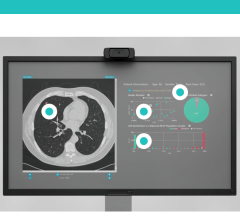
March 1, 2022 — Today, the U.S. Food and Drug Administration issued three final guidances to industry regarding cancer clinical trials that parallel the goals of President Biden’s recently announced effort to renew and build upon his 2016 Cancer Moonshot initiative to facilitate continued advancement in cancer prevention, detection, research and patient care.
Inspired by medical advancements in the field since 2016, the President’s new goals for this iteration are to reduce the death rate from cancer by at least 50 percent over the next 25 years; to improve the experience of people and their families living with and surviving cancer; and, by doing this and more, to end cancer as we know it today.
“With today’s actions the FDA is recommending important principles that involve addressing inequities, targeting the right treatments to the right patients, speeding progress against the most deadly and rare cancers, and learning from the experience of all patients,” said Richard Pazdur, M.D., Director for the FDA’s Oncology Center for Excellence. “All of these are tenets of Cancer Moonshot’s mission.”
The first guidance, “Inclusion of Older Adults in Cancer Clinical Trials,” provides recommendations to sponsors and institutional review boards for including older adult patients, aged 65 years and older, in the clinical trials of drugs for the treatment of cancer. It recommends enrolling older adults in early phase studies of cancer clinical trials, if appropriate, to obtain information that better informs later phase studies. It also includes recommendations for trial design, recruitment strategies, information collection, and developing and reporting more discrete age groups to encourage enrollment of this historically excluded population.
It is vital to have older adult patients in clinical trials because differences may exist between younger and older patients in drug response and toxicity. Older adults often have other diseases or conditions and may be taking medications that could impact the efficacy of either the cancer drug or other drugs they are taking and may also impact the incidence and the severity of adverse events. There could also be important differences in efficacy in older adult patients compared to the younger or general population.
The second guidance for industry “Expansion Cohorts: Use in First-in-Human Clinical Trials to Expedite Development of Oncology Drugs and Biologics,” provides advice on designing and conducting trials with multiple expansion cohorts that allow for concurrent accrual of patients into different cohorts to assess safety, pharmacokinetics, and anti-tumor activity of first-in human cancer drugs. Pharmaceutical companies and researchers can use trials with expansion cohort design to assess many different aspects of a drug in a single clinical trial to efficiently expedite the clinical development of the drug.
This guidance provides the FDA’s recommendations regarding:
- characteristics of drug products best suited for consideration for development under a multiple expansion cohort trial;
- information to include in investigational new drug application submissions to support the design of individual expansion cohorts;
- when to interact with FDA on planning and conduct of multiple expansion cohort studies; and
- safeguards to protect patients enrolled in these expansion cohort studies.
Finally, the “Master Protocols: Efficient Clinical Trial Design Strategies to Expedite Development of Oncology Drugs and Biologics” guidance addresses master protocol design including information on what sponsors should submit to the FDA as part of these trial design approaches. It also directs how sponsors should interact with the FDA to facilitate efficient review and mitigate risks to patients. These clinical trials can help expedite the clinical development of a drug to treat cancer because they allow more than one investigational drug or biologic, more than one disease type, or more than one patient population, to be evaluated under a single clinical trial structure.
The standard approach to generating evidence has become more expensive and challenging to execute and, as a result, answers to important clinical questions are often delayed. Well-designed master protocols can provide answers more quickly and efficiently than traditional clinical trials. Because of the complexity of these trials and the potential regulatory impact, it’s important that the FDA is providing this guidance on how to conduct well designed trials that protect patient safety and obtain quality data needed to support drug approval.
For more information: www.fda.gov
Related Information
Oncology Center of Excellence Guidance Documents
Project Silver - Improving the Evidence Base for the Treatment of Older Adults with Cancer
Follow-up Costs Can Add Up if a Free Cancer Screening Shows a Potential Problem
CMS Expands Coverage of Lung Cancer Screening with Low Dose Computed Tomography
Radiation Oncologists Applaud Biden-Harris Administration's Renewed Commitment to Cancer Moonshot
Artificial Intelligence Will be Used to Improve Lung Cancer Screenings


 December 04, 2025
December 04, 2025 









